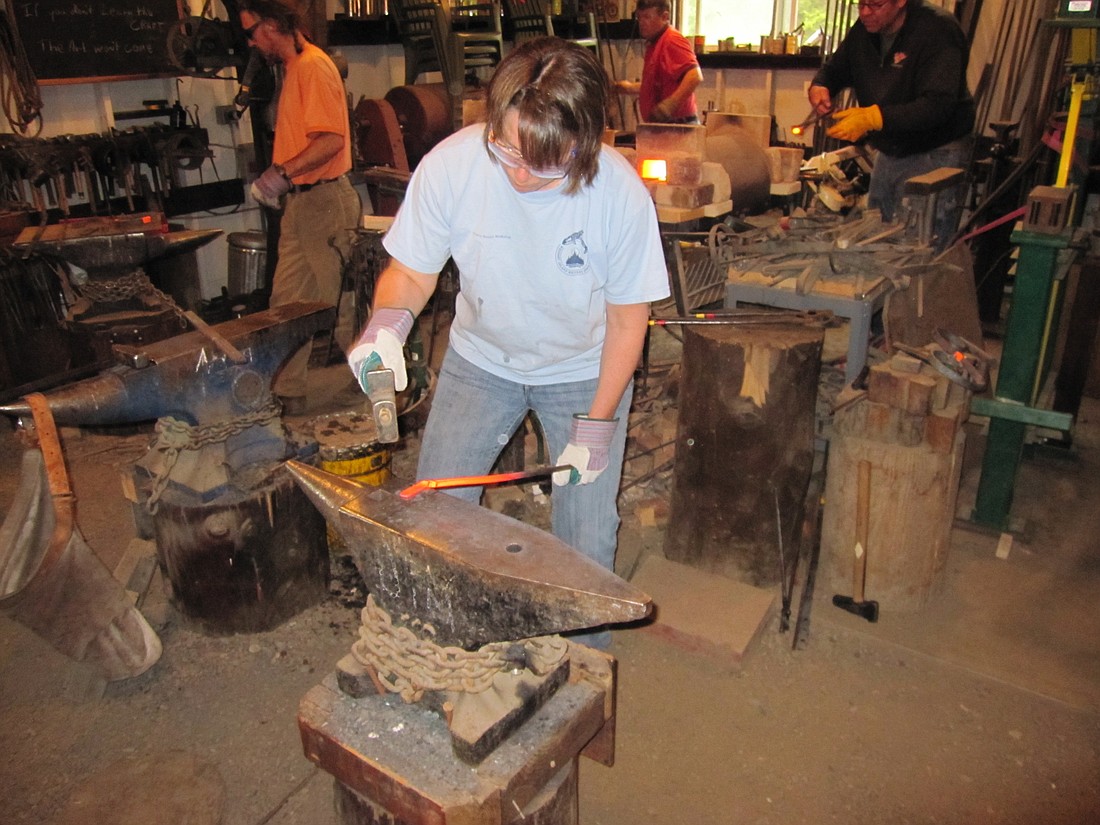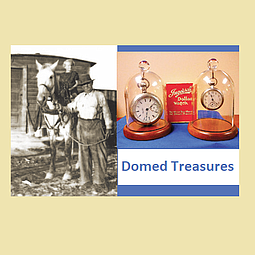Blacksmith Basics
February 10, 2014 at 10:48 a.m.
In order to research my blacksmith ancestor's life for a possible novel, the first place I turned was a horseshoeing school in Snohomish, Washington.
"Common misconception," the instructor told me when I explained my mission. "Feel free to watch, take all the photos you want. But horseshoers are farriers. A blacksmith is something else entirely."
But what? I really needed to know. The Last of the Blacksmiths would be a novel about a young man of 15 sent across the Atlantic to America from the Bavarian Rhineland to apprentice as a blacksmith. How could I tell his story if I didn't have a clue about his experience?
Little is written about nineteenth century blacksmiths. As I struggled for insights, digging up the few books I could find, I began to realize the radical changes in our lives since the mid-1850s. These days, blacksmiths forge decorative objects, working bar steel and propane forges. Back then, blacksmiths forged wrought iron using coal and coke forges. Blacksmiths used to create all ironwork essential to survival: farming tools, cookware, and chain, for instance. This skill was an incredibly important, difficult, creative profession for thousands of years—until the machine age, which came to stay in the latter half of nineteenth century. By the early twentieth century, old-style blacksmithing and most artisan crafts had ceased to exist.
The information was impressive, but I wasn't much closer to gaining an understanding of a typical day in the life of a blacksmith. In exasperation, I searched for a place to try my hand at it myself. Through the website of the Northwest Blacksmith Association, I discovered a four-day Beginning Blacksmithing class at Old West Forge. The name sounded promising, so I signed up.
It occurred to me more than once, as I drove down to White Salmon, Washington, for the class, that I could turn back. I was scared. How would I survive hour after hour of such physical labor--sledge hammers, slack tubs, and 2000-degree forges, not to mention being a woman in a male-dominated profession?
I needn't have worried. My six fellow students turned out to be as green as I was: a retiree, a research scientist, a gardener, an English teacher. Even better: three women and three men. Welcome to the 21st century! Those four days were incredibly hard work, but the experience was a constant resource as I wrote the novel.
In spite of the title “Old West Forge,” the shop used propane. I didn't come across an operating coal forge until I was doing research in Germany. In a small village called Friedelsheim, I had the good fortune to visit a living history exhibit, an honest-to-God centuries-old blacksmith shop and coal forge operated by volunteers with a passion for reviving what’s been lost.
As I watched the sparks fly, heard the clang of the hammer, and smelled the fire and rust in my nose—for a brief moment— the veil of history lifted, transporting me back to that earlier time.
Claire Gebben is a Mercer Island resident. Her novel, The Last of the Blacksmiths (Coffeetown Press Trade Paperback) is now available in bookstores.
Read tales from your friends and neighbors in SHARING STORIES. Send your stories and photos to ariele@comcast.net. Tell local or personal stories; discuss concerns around aging and other issues; share solutions, good luck, and reasons to celebrate. Pieces may be edited or excerpted. We reserve the right to select among pieces. Photos are always a plus and a one-sentence bio is requested (where you live, maybe age or career, retired status, etc.).





